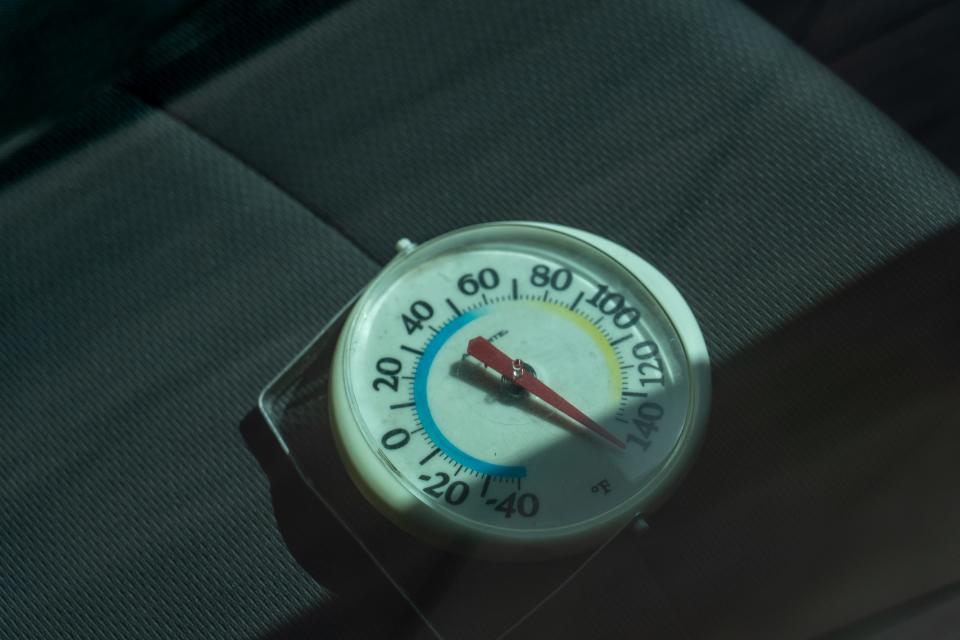Round Rock trauma specialist offers safety tips to prevent summer injuries
While Central Texas’ hot summer temperatures and beautiful lakes create the perfect environment for boating and water recreation, some Texans prefer taking a road trip to escape the heat. Regardless of what you choose to do this summer, it’s important to take the proper precautions, as emergency departments typically see an increase in illness and injuries related to water, heat and travel as temperatures start to rise.
Health care experts at the Level II Trauma Center at St. David’s Round Rock Medical Center suggest thoughtful planning to ensure a safe summer.

Practice caution while boating
Before a boating excursion, ensure that the boat operator is fully versed in the nautical rules of navigation and not under the influence of alcohol or drugs while operating the boat. Additionally, accidents like propeller strikes cause catastrophic injuries every year, so be sure the engine is turned off before allowing anyone to enter or exit the boat.

Be sure you have the proper type of life jackets based on activity for each person on board. Everyone on the watercraft, regardless of age, should wear a U.S. Coast Guard-approved life jacket. Children younger than 13 are required by law to always wear a life jacket.
Carbon monoxide can also be deadly to passengers if they remain at the rear of the boat while the engine is running, and the boat is not moving. Signs of carbon monoxide poisoning include headaches, upset stomach, vomiting and confusion. If someone exhibits these signs, move them to the front of the boat and turn off the engine. Prepare to conduct CPR if someone is unconscious and, if necessary, call 911.
Stay safe in the water
According to the Centers for Disease Control and Prevention, drowning kills approximately 4,000 people each year in the U.S. and is the leading cause of injury-related deaths for children ages 1-4.
Drowning can happen quickly and quietly. Children in and near water must be closely supervised by an adult who avoids distractions from a phone, book or conversation and focuses on keeping children within arm’s reach. Dress kids in bright or neon-colored swimsuits to easily identify them in a crowded pool and while swimming underwater.
No matter your level of experience in water, never jump or dive into a pool without first checking the depth of the area. Diving headfirst into shallow water could result in a head, neck or spine injury.
Protect against the sun
Plan to enjoy outdoor activities during early mornings and evenings, and avoid being outdoors during the hottest time of day, which is usually between 10 a.m. and 5 p.m. While outside, seek shade as often as possible, and wear lightweight and loose clothing to avoid overheating. Commercial cooling towels and wraps also can help provide relief from the heat.
It is easy to become dehydrated from sweat, so it is vital to drink plenty of water or electrolyte fluids. Wear sunscreen with an SPF of 30 or higher to protect you and your family from painful sunburns, which can contribute to dehydration and make it harder for the body to cool down quickly. Don’t forget to reapply sunscreen every two hours.
Signs of heat exhaustion include weakness, nausea, dizziness and heavy sweating. If you are experiencing those symptoms, drink plenty of water and find a location to cool off indoors. If symptoms are not resolved quickly, seek emergency assistance.
Prevent vehicular heat stroke
Never leave a child or pet in a vehicle unattended for any length of time, whether the car’s engine is running or not. High outdoor temperatures can cause vehicles to heat up in a matter of minutes, and children can’t regulate their body temperature as well as adults. Rolling down the windows makes no difference in preventing heatstroke.
Parents and guardians can practice leaving an item in the backseat, such as a purse or bag, as a reminder to check the vehicle for a child. While a rear-facing car seat can save lives during collisions, it’s more difficult to notice a sleeping or quiet child in the seat.
Continue to take precautions when you are not driving by keeping keys out of reach and doors secured from children to prevent accidents.
Drive safely
With more people hitting the roads to explore their destinations during the summer, the risk for injuries from traffic collisions also increases. If you plan on traveling by car, always wear your seatbelt. Also, be sure that every child is in the right seat for their size, whether that is a harnessed car seat or a booster seat.
Eliminate distractions such as phones, food and loud music. Navigation systems can cause a driver to lose focus and crash, so make sure you have your GPS set for your destination before you hit the road.
Remember these tips to keep you and your loved ones safe this summer.
Kristen Hullum, MSN, RN, is the trauma injury prevention coordinator at St. David’s Round Rock Medical Center.
This article originally appeared on Austin American-Statesman: Round Rock trauma specialist offers summer safety tips

